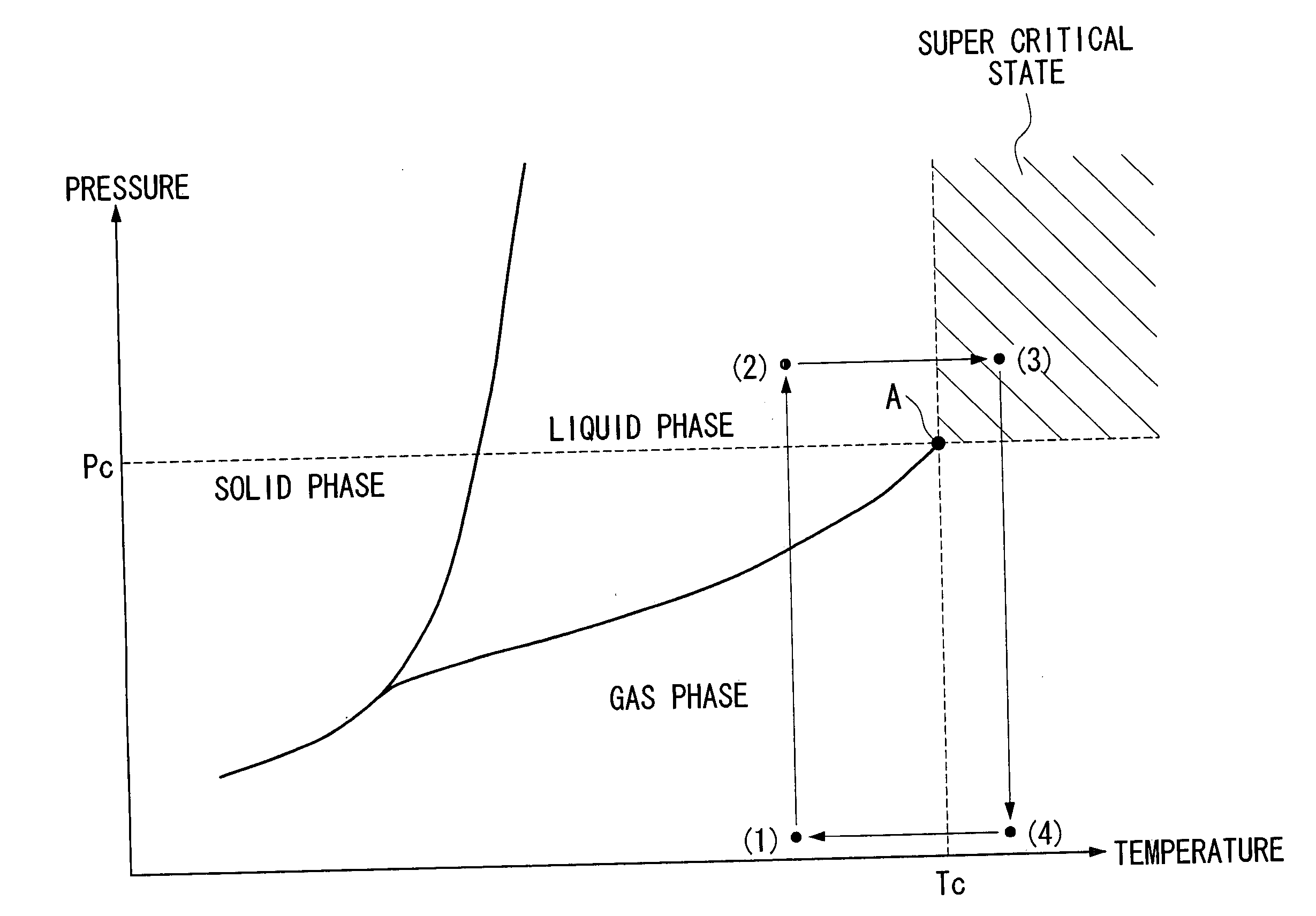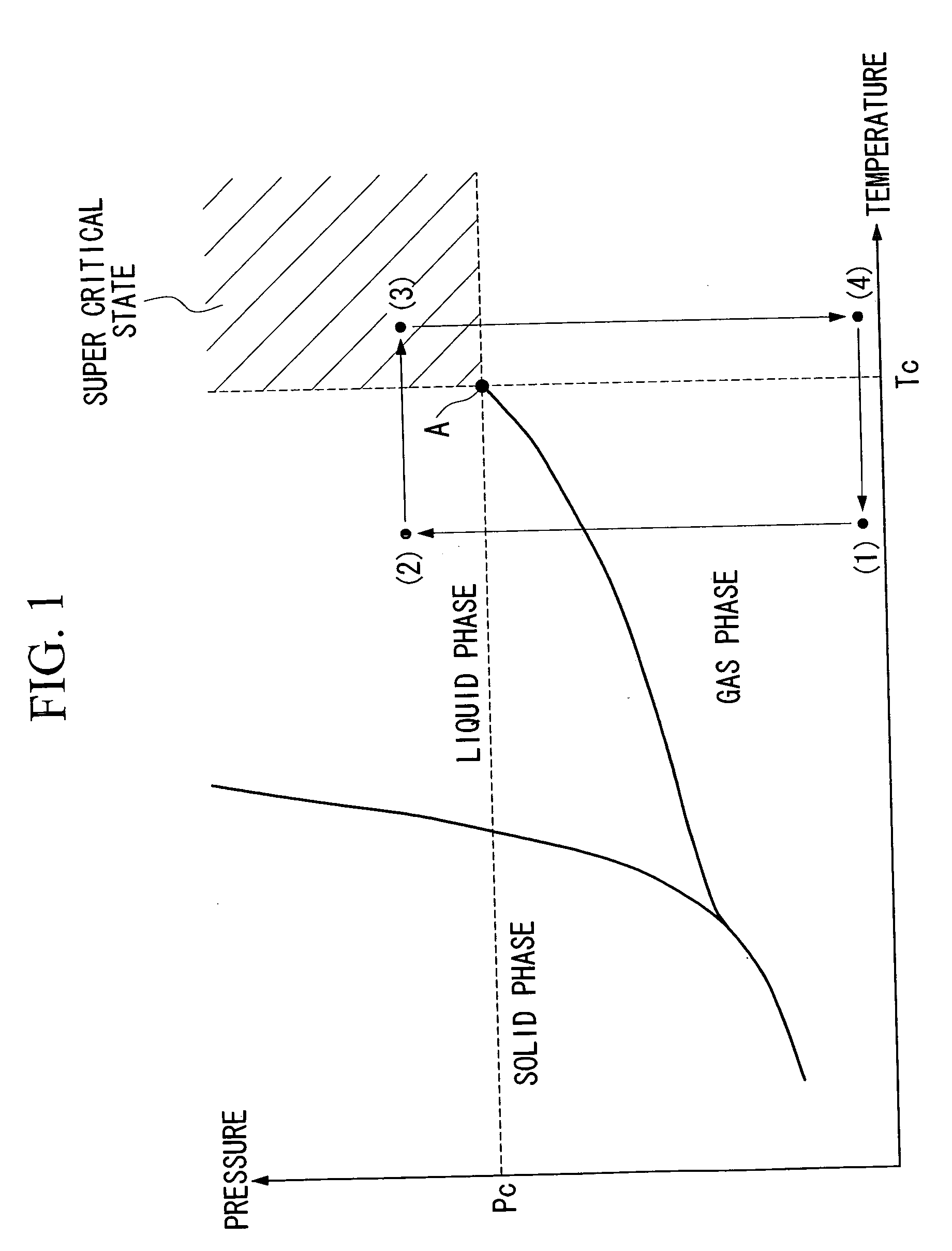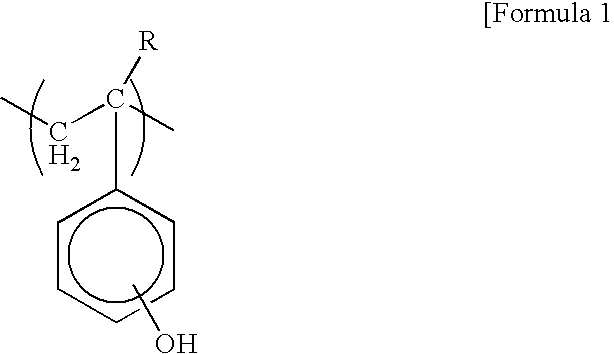Positive resist composition
a composition and resist technology, applied in the field of positive resist composition, can solve the problems of pattern collapse, fine resist pattern collapse, and resist pattern with extremely high aspect ratio, and achieve the effects of excellent yield, favorable shape, and easy collapse of very fine resist pattern
- Summary
- Abstract
- Description
- Claims
- Application Information
AI Technical Summary
Benefits of technology
Problems solved by technology
Method used
Image
Examples
example 1
[0135] A component (A), a component (B) and a component (D) described below were dissolved uniformly in a component (C), yielding a positive resist composition.
[0136] As the component (A), 100 parts by weight of an acrylate ester-based copolymer comprising the three structural units shown in [formula 26] was used. The proportions p, q and r of each of the structural units used in preparing the component (A) were p=40 mol %, q=40 mol % and r=20 mol % respectively.
[0137] The alkali-soluble unit content within the thus prepared component (A) was 0 mol %, and the weight average molecular weight of the component (A) was 10,000.
[0138] As the component (B), 2.0 parts by weight of triphenylsulfonium nonafluorobutanesulfonate and 0.6 parts by weight of triphenylsulfonium trifluoromethanesulfonate were used.
[0139] As the component (C), a mixed solvent of 450 parts by weight of propylene glycol monomethyl ether acetate and 300 parts by weight of ethyl lactate was used.
[0140] As the compo...
example 2
[0154] When the process of the example 1 was repeated, and the exposure dose was increased (overdose) to form an even finer resist pattern, a line and space pattern with a line width of 48 nm, an aspect ratio of 7.1, and a pitch of 180 nm was formed. The shape of the resist pattern was favorable, and no pattern collapse had occurred.
example 3
[0157] As the component (A), the same copolymer as the example 1 was used.
[0158] As the component (B), 6.82 parts by weight of triphenylsulfonium nonafluorobutanesulfonate was used.
[0159] As the component (C), a mixed solvent of 450 parts by weight of propylene glycol monomethyl ether acetate and 300 parts by weight of propylene glycol monomethyl ether was used.
[0160] As the component (D), 0.3 parts by weight of triethanolamine was used.
[0161] The component (A), the component (B), the component (D), and 0.05 parts by weight of a non-ionic fluorine / silicone-based surfactant (brand name: Megafac R-08 (manufactured by Dainippon Ink and Chemicals, Incorporated)) were dissolved uniformly in the component (C), thus yielding a positive resist composition.
[0162] Subsequently, the thus obtained positive resist composition was applied to the surface of a hexamethyldisilazane-treated silicon wafer using a spinner, and was then prebaked and dried on a hot plate at 150° C. for 90 seconds, t...
PUM
 Login to View More
Login to View More Abstract
Description
Claims
Application Information
 Login to View More
Login to View More - R&D
- Intellectual Property
- Life Sciences
- Materials
- Tech Scout
- Unparalleled Data Quality
- Higher Quality Content
- 60% Fewer Hallucinations
Browse by: Latest US Patents, China's latest patents, Technical Efficacy Thesaurus, Application Domain, Technology Topic, Popular Technical Reports.
© 2025 PatSnap. All rights reserved.Legal|Privacy policy|Modern Slavery Act Transparency Statement|Sitemap|About US| Contact US: help@patsnap.com



